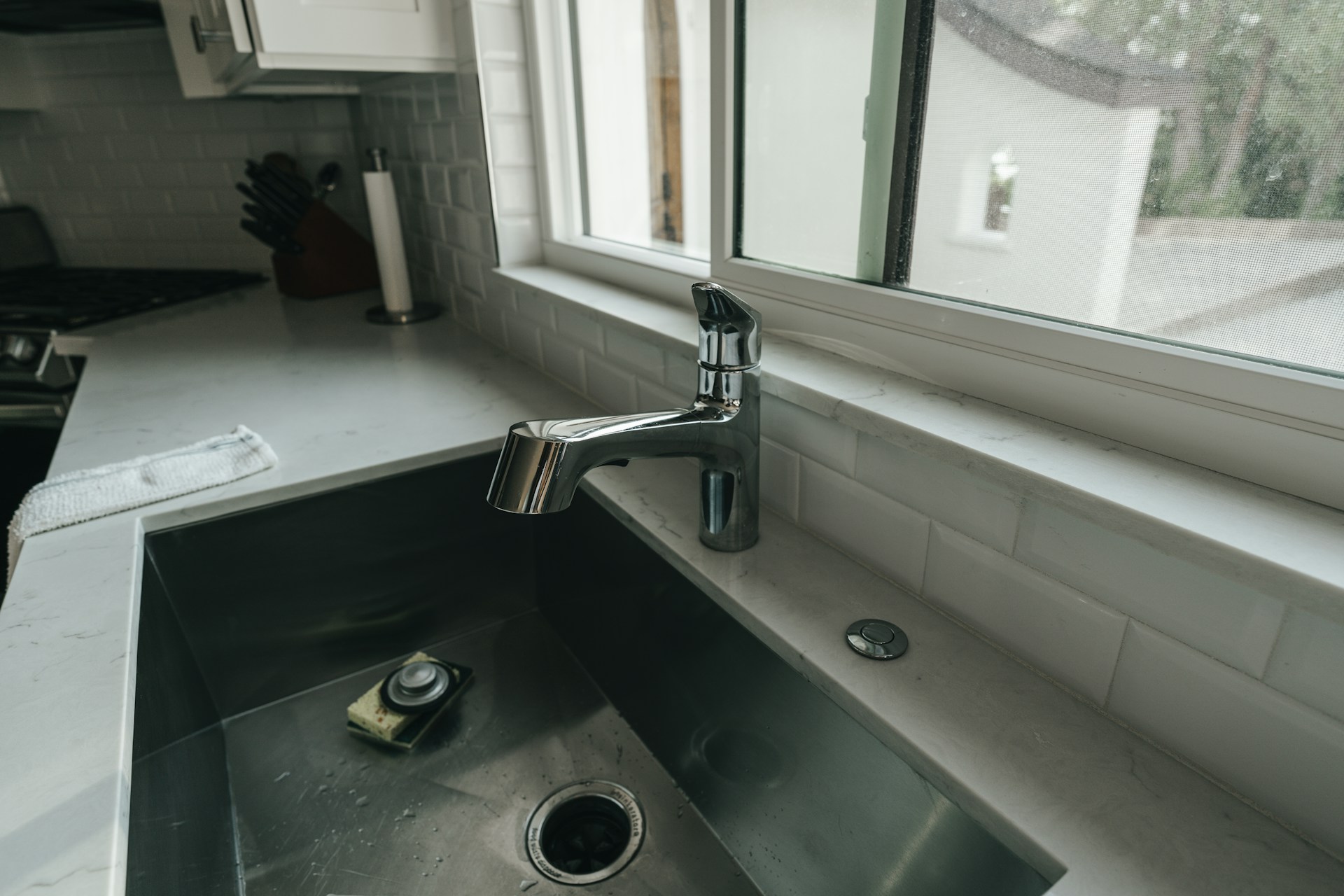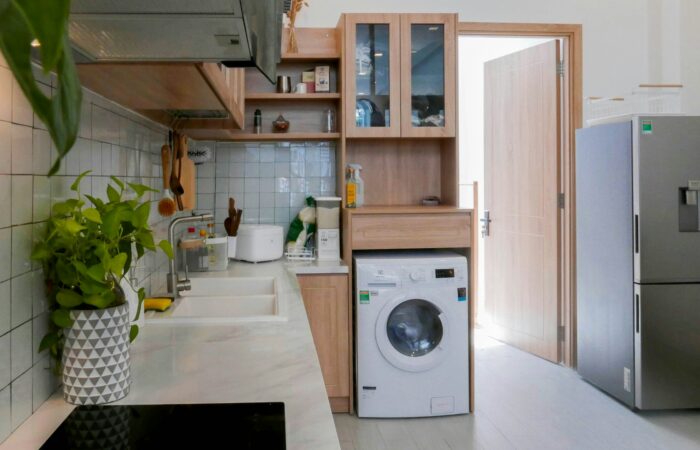
Few household problems are as frustrating as standing in ankle-deep water during your morning shower or watching your kitchen sink refuse to drain after washing dishes.
While a clogged drain might seem like a minor inconvenience, understanding what causes these blockages can save you time, money, and the hassle of emergency plumber visits.
Drain problems rarely happen overnight. Most blockages develop gradually as various materials accumulate in your pipes, creating stubborn obstructions that slow water flow or stop it entirely.
The good news? Many of these issues are preventable once you know what to look for.
This guide explores the most common culprits behind drain blockages and provides practical solutions to keep your plumbing flowing smoothly.
Whether you’re dealing with a slow drain in your bathroom or planning preventive maintenance for your home, these insights will help you tackle drainage issues before they become major headaches.
Hair: The Silent Pipe Assassin
Hair ranks as the primary villain in bathroom drain blockages, particularly in showers and bathroom sinks.
Every time you wash your hair, loose strands flow down the drain, where they combine with soap residue and other debris to form dense clogs.
Why Hair Clogs Are So Stubborn
Hair doesn’t decompose quickly in water, and its fibrous structure allows it to trap other materials like soap scum, dead skin cells, and small debris.
Over time, these combinations create thick, rope-like blockages that can completely obstruct water flow.
Long hair poses an especially significant challenge because individual strands can wrap around pipe joints and drainage components, creating anchor points for future debris.
Even households with short-haired residents aren’t immune—pet hair from grooming and bathing can contribute to the same problems.
Prevention and Solutions
Installing drain screens or hair catchers provides the most effective prevention method. These inexpensive devices trap hair before it enters your pipes, allowing you to dispose of it in the trash instead.
For existing hair clogs, drain cleaning methods vary in effectiveness. Simple blockages near the surface might respond to manual removal using needle-nose pliers or a drain snake.
More stubborn clogs may require professional services, especially if the blockage has formed deep within your plumbing system.
Grease and Oil: Kitchen Drain Destroyers
Kitchen sinks face unique challenges that other drains don’t encounter. Cooking oils, fats, and grease represent the most common causes of kitchen drain problems, despite many people’s assumption that hot water will wash these substances away.
The Science Behind Grease Clogs
When hot grease enters your drain, it travels through the pipes in liquid form initially.
However, as it cools and moves through your plumbing system, it solidifies and adheres to pipe walls. This creates a sticky surface that traps food particles, soap residue, and other debris.
Over time, these accumulated materials form thick, waxy blockages that can completely obstruct water flow.
Unlike hair clogs that typically form near drain openings, grease blockages often develop deeper in your plumbing system, making them more challenging to address.
Proper Grease Disposal
Never pour cooking oils, fats, or grease down your kitchen drain, regardless of water temperature.
Instead, allow grease to cool and solidify, then scrape it into your trash can. For liquid oils, collect them in a disposable container before throwing them away.
When washing greasy dishes, use paper towels to remove excess oil before rinsing.
Hot water and dish soap can help break down remaining residue, but avoid using excessive amounts of soap, which can contribute to other drainage issues.
Soap Scum and Mineral Deposits: The Gradual Blockers
Soap might seem harmless, but it can contribute significantly to drain blockages, especially in areas with hard water.
Traditional bar soaps contain fats that combine with minerals in hard water to create soap scum—a chalky, sticky substance that accumulates on pipe walls.
Hard Water’s Impact on Drainage
Hard water contains high levels of calcium and magnesium, which react with soap to form insoluble precipitates.
These deposits don’t just affect visible surfaces like shower doors—they also build up inside your pipes, gradually reducing water flow capacity.
Mineral deposits can also form independently of soap, particularly in areas with very hard water. These crusty buildups create rough surfaces inside pipes that trap hair, debris, and other materials more easily.
Addressing Soap and Mineral Buildup
Regular cleaning with vinegar or specialized drain cleaners can help dissolve soap scum and mineral deposits. For severe buildup, professional drain cleaning may be necessary to restore proper water flow.
Consider switching to liquid soaps or body washes, which don’t contain the same fats that contribute to soap scum formation.
Installing a water softener can also reduce mineral content in your water supply, preventing future deposits.
Food Particles: Common Kitchen Culprits
Even homes with garbage disposals can experience drain problems from food particles. Not all food waste is suitable for disposal systems, and certain items can create blockages regardless of how well your disposal functions.
Problematic Foods for Drains
Starchy foods like pasta, rice, and potatoes can expand when exposed to water, creating thick, gummy masses that obstruct drainage.
Coffee grounds, despite their small size, don’t break down easily and can accumulate in pipes over time.
Fibrous vegetables like celery, asparagus, and corn husks can wrap around disposal blades and create blockages. Seeds, pits, and bones should never enter your drain system, as they can damage disposal units and create obstructions.
Smart Food Waste Management
Scrape plates thoroughly before washing dishes, disposing of food scraps in compost bins or trash cans. Use sink strainers to catch small particles that might escape initial cleaning.
When using a garbage disposal, run cold water during operation and for several seconds afterward to help flush ground food particles through your plumbing system.
Avoid grinding large quantities of food waste at once, which can overwhelm your disposal and drainage system.
Foreign Objects: Unexpected Blockage Sources
Small objects that accidentally fall down drains can create immediate blockages or contribute to larger problems over time.
These items range from obvious culprits like jewelry and toys to less apparent problems like cotton swabs and dental floss.
Common Foreign Object Offenders
Bathroom drains frequently encounter cotton balls, dental floss, and small toiletry items. These objects can lodge in pipe bends or catch on existing buildup, creating anchor points for future blockages.
Children’s toys, jewelry, and small household items can create immediate obstructions, especially in older plumbing systems with narrower pipes.
Even items that seem flushable, like feminine hygiene products and baby wipes, can cause significant blockages in toilet drains.
Prevention Strategies
Keep small objects away from drain openings, and teach children about proper drain usage. Install drain covers in areas where small items might accidentally fall into drains.
Never use drains as disposal systems for items like medication, cigarette butts, or cat litter. These materials can create blockages and may also cause environmental problems in your local water treatment systems.
Tree Roots: The Underground Invasion
Outdoor drainage systems face unique challenges from tree roots, which naturally seek water sources.
Root intrusion represents one of the most serious types of drain blockages, often requiring professional intervention to resolve.
How Roots Enter Drainage Systems
Tree roots can detect moisture from small leaks or joints in underground pipes.
Once they find these entry points, roots grow into the pipes, seeking a consistent water supply. Over time, root systems can fill pipe interiors, blocking water flow and potentially damaging pipe structures.
Older homes with clay or concrete pipes are particularly vulnerable to root intrusion, as these materials develop cracks and gaps more readily than modern PVC systems. However, even newer plumbing isn’t immune to determined root systems.
Addressing Root Problems
Root blockages typically require professional drain cleaning services with specialized equipment.
Hydro-jetting or mechanical root cutting can clear existing blockages, but long-term solutions may involve pipe replacement or root barriers.
Regular maintenance helps identify root problems before they become severe. If you notice recurring slow drains, gurgling sounds, or sewage backups, root intrusion might be the underlying cause.
Keeping Your Drains Flowing Freely
Understanding these common blockage causes empowers you to take preventive action before minor issues become major problems.
Regular maintenance, proper disposal practices, and prompt attention to slow drains can extend your plumbing system’s lifespan and reduce the need for emergency repairs.
Remember that some drainage issues require professional expertise, especially those involving main sewer lines or complex blockages.
When home remedies fail to resolve persistent problems, contact a qualified plumber who can diagnose underlying issues and provide appropriate solutions.
By implementing these prevention strategies and staying alert to early warning signs, you can maintain efficient drainage throughout your home and avoid the frustration of dealing with completely blocked pipes.
Subscribe To Get Update Latest Blog Post
No Credit Card Required







